- News
- Reviews
- Bikes
- Components
- Bar tape & grips
- Bottom brackets
- Brake & gear cables
- Brake & STI levers
- Brake pads & spares
- Brakes
- Cassettes & freewheels
- Chains
- Chainsets & chainrings
- Derailleurs - front
- Derailleurs - rear
- Forks
- Gear levers & shifters
- Groupsets
- Handlebars & extensions
- Headsets
- Hubs
- Inner tubes
- Pedals
- Quick releases & skewers
- Saddles
- Seatposts
- Stems
- Wheels
- Tyres
- Tubeless valves
- Accessories
- Accessories - misc
- Computer mounts
- Bags
- Bar ends
- Bike bags & cases
- Bottle cages
- Bottles
- Cameras
- Car racks
- Child seats
- Computers
- Glasses
- GPS units
- Helmets
- Lights - front
- Lights - rear
- Lights - sets
- Locks
- Mirrors
- Mudguards
- Racks
- Pumps & CO2 inflators
- Puncture kits
- Reflectives
- Smart watches
- Stands and racks
- Trailers
- Clothing
- Health, fitness and nutrition
- Tools and workshop
- Miscellaneous
- Buyers Guides
- Features
- Forum
- Recommends
- Podcast
review
£549.00
VERDICT:
Very good direct-drive smart trainer that'll get you up and riding indoors in no time
Weight:
22,240g
Contact:
At road.cc every product is thoroughly tested for as long as it takes to get a proper insight into how well it works. Our reviewers are experienced cyclists that we trust to be objective. While we strive to ensure that opinions expressed are backed up by facts, reviews are by their nature an informed opinion, not a definitive verdict. We don't intentionally try to break anything (except locks) but we do try to look for weak points in any design. The overall score is not just an average of the other scores: it reflects both a product's function and value – with value determined by how a product compares with items of similar spec, quality, and price.
What the road.cc scores meanGood scores are more common than bad, because fortunately good products are more common than bad.
- Exceptional
- Excellent
- Very Good
- Good
- Quite good
- Average
- Not so good
- Poor
- Bad
- Appalling
The successor to the original budget direct-drive trainer, Tacx's Flux S is easy to use, measures your power to a useful level of accuracy and consistency, and works with popular virtual riding applications such as Zwift to make indoor training less dull. It's still decent value, but it now has stiff competition from other budget direct-drive trainers.
- Pros: Smooth feel, quiet
- Cons: High resistance floor, no handle
If you were cynical you might say that the Tacx Flux S is just a rebadged version of the original Tacx Flux smart trainer from a couple of years ago, but that's to underplay what Tacx has achieved here, with a high-quality wheel-off trainer for just over £500.
> Find your nearest dealer here
In terms of overall function, it's true that the Flux S is largely unchanged from the original Flux. It's now claimed to be accurate to 3% versus the original's 5%, but the original was better than 5% accurate anyway – as long as you got a good one.
And that's largely what's going on here, of course. The original Flux was plagued with reliability problems. Tacx did about as good a job of dealing with the problems as anyone I've ever seen deal with a quality problem in the bike industry, but it unarguably hurt. Calling this version the Flux S helps draw a line under that unfortunate episode.
Training with the Flux S
Trainers that use the ANT+ FE-C control and communication protocol are usually very easy to set up, and that's the case here. Plug in an ANT+ dongle to your computer – Tacx makes an excellent one – fire up your chosen software and away you go.
The Flux S has a smooth pedalling feel that's as close to feeling like you're actually riding a bike as any trainer I've used. It's significantly better than the Flux 1.0 and as good as the CycleOps Hammer 1.0.
I spent 10 minutes just noodling around in Zwift to warm up both the Flux S and my PowerTap P1 pedals, did a calibration spindown on the Flux S and calibration adjustment on the pedals, and dialled up Jon's Mix on Zwift to provide a variety of efforts.
Tacx claims the Flux S reads your power to an accuracy of +/- 3%, and that's consistent with my readings from the P1S in most situations.
The Flux S struggles in two situations.
It's not good at delivering very low levels of resistance. At the beginning of a warm-up and end of a warm-down, when you're only supposed to be putting out a few dozen watts, I found the Flux S simply couldn't provide resistance below about 80 watts.
I also tried messing about with my gears to see how quickly the Flux S could respond to a change in torque to maintain the same resistance (I'm indebted to Shane Miller at gplama.com for this idea). Not very quickly, it turns out, and in some cases not at all. Noodling along at 160 watts in 34x28, I found the Flux S was able to restore resistance after a few seconds when I went up to the 25, 23 and 21-tooth sprockets, but couldn't cope if I went any higher up the cassette.
It usually takes a few seconds for the resistance of the Flux S to ramp up when you go from, say, gentle warm-up to a sprint, so it's not surprising that it takes a similar time to handle a gear change, but that lag might be a handicap if you were e-racing and needed instant response for an attack or a sprint.
For the most part, though, readings from the Flux S and the PowerTap P1S were within claimed tolerances, and the Flux S's readings are certainly consistent and accurate enough that it'll make a perfectly fine training tool.
The Flux S also measures your cadence, and since it does so by algorithmically determining when you're pedalling by the peaks in force through your bike's transmission, it's amazingly accurate.
Assembly
While some wheel-off home trainers make a great virtue of needing no assembly – you just fold out the legs and you're away – putting the Flux S together isn't exactly arduous. You should put the cassette on first because it's easier to drop the sprockets into place with the Flux S on its side, then fit the legs which slide into place in the body and are held with a couple of sturdy bolts that tighten with a supplied 8mm hex.
Remember you'll need both a lockring tool and a chainwhip to fit the cassette.
Tacx apparently expects you to set up the Flux S once and leave it in place. Not only are the legs fixed, unlike the folding legs of many other trainers including Tacx's own Neo 2, but there's no handle to help lug it around. Fine if you have a permanent pain cave, but annoying if the family wants to use the back room sometimes.
Features
The feature set you can expect for a budget fully smart direct-drive trainer hasn't changed much in the last couple of years. Tacx says the Flux S can simulate a gradient of up to 10%, and provide resistance up to 1,500 watts. Unless you're the sort of out-and-out masochist who dials up Zwift's gradient simulation past its default 50%, you're not going to need much more than that.
The Flux S communicates and is controlled via the ANT+ and Bluetooth Smart protocols. You're going to need to get an ANT+ dongle to use it with most computers or tablets, or a Bluetooth dongle if you want to go that way as the built-in Bluetooth in most PCs is notoriously dire.
Bluetooth capability means you should be able to use the Flux S with Zwift on AppleTV, one of the cheapest ways of putting together a dedicated turbo training system. However, we haven't tested this.
Documentation
You get a quick start guide and, er, that's it. This is an expensive bit of kit and if you're a smart trainer newbie you won't understand everything it does, as I found when I reviewed the original Flux. Just a run-down of the features and capabilities would be helpful.
What's changed since the original Flux?
The price for starters. The first Flux was £700, this one is £550. The price of just about everything bike-related has gone up 5-10% in the last couple of years, so that's very welcome news if you're planning an indoor training programme.
> Buyer's Guide: 18 of the best indoor trainers and rollers
The Flux S has a smoother feel than the Flux v1.0. In 2017 I characterised the feel of the Flux as like 'pushing a mechanical brake, rather than pushing a bike through the air. It's not unpleasant, but you're never going to close your eyes and imagine you're on the road.'
With the Flux S you still know you're not out on the open road, but it's a much smoother feel and a better simulation of the way the resistance of a bike changes as you increase speed. That's down to a heavier flywheel than the original's and no doubt some tweaking of the electronics that ultimately controls everything.
A small but welcome change is that the Flux S can accommodate a long-arm rear derailleur. The end of a GS or SGS derailleur would foul the legs of the original Flux in some gears. That's no longer the case.
The original Flux used Edco's MultiSys freehub body so you could fit either a Campagnolo or a Shimano cassette. The Flux S is Shimano-only; Campagnolo, SRAM XD and XD-R bodies are available separately. That probably saves Tacx a chunk on the bill of materials without much affecting the Flux S's appeal. There just aren't enough Campagnolo-equipped bikes out there to justify the extra cost of the Edco body on a budget trainer.
More annoyingly, with so many bikes now coming with rear thru-axles, the Flux S only accommodates standard 130mm and 135mm quick releases; you'll need to buy an adapter if your bike has a thru-axle rear hub. The more expensive Flux 2 is compatible with 142mm and 148mm thru-axles out of the box.
Internally, the Flux S now has a copper flywheel rather than the original aluminium one. By giving the electromagnets that provide the braking force a more conductive material to work with, that should allow the Flux S to simulate any given gradient at a higher wattage.
Rivals
While it was the cheapest direct-drive smart trainer you could buy when it was launched in 2018, the Flux S now has some serious competition from Elite whose Zumo trainer is just £429. The Zumo is being lauded as exceptionally good for the money by power-training experts, and is compatible with 142 x 12mm thru-axles out of the box.
Alternatively, for £650, Elite's Suito comes with a cassette, a 142mm thru-axle adapter, a riser block and a month of Zwift, and needs no assembly, all of which you might see as being worth the £100 over the Flux S. And you can pick up a Suito for £529, whereas nobody seems to be discounting the Flux S.
All this means it's a good time to be shopping for a fully smart direct-drive trainer, and the Flux S should be on your shortlist.
Verdict
Very good direct-drive smart trainer that'll get you up and riding indoors in no time
road.cc test report
Make and model: Tacx Flux S Smart Trainer
Size tested: One
Tell us what the product is for and who it's aimed at. What do the manufacturers say about it? How does that compare to your own feelings about it?
A connected – 'smart' – trainer provides the ability to do power-based training indoors and to use apps like Zwift, TrainerRoad, Sufferfest and others to drive your training sessions and to join online training groups and races.
Tacx says: "The FLUX S Smart checks all the boxes when you are looking for a Smart direct drive trainer. Reliable, accurate, silent, strong and offering a good ride feel. This bike trainer is the ideal indoor training companion for the many hours sweating and cycling with your favourite apps."
In short, this is a training tool for anyone who wants to get and stay fit while the weather's lousy, or who wants to use Zwift and other online training and racing systems.
The Flux S is one of the cheapest direct-drive, fully smart connected trainers.
Tell us some more about the technical aspects of the product?
The Flux S can communicate with your computer, tablet, phone or wireless bike computer using ANT+ and Bluetooth protocols. Using ANT+ FEC and the equivalent protocol your devices can control the resistance so you can tailor your training session to your fitness and goals. Here's Tacx's gert list of the specs:
FEATURES:
Type of trainer: Interactive Smart direct drive with electric brake
Magnets: 8 Permanent ferrite magnets & 8 electromagnets
Transmission: None
Electrical requirements: 110-240 Volt
Power indicator: None
Connection indicator (ANT/BT): 2 LEDs
Firmware upgradable: Yes
Suitable cassettes: Shimano & SRAM: 8 - 11 speed. Campagnolo, SRAM XD and XD-R body sold separately, Not suitable for Specialized SCS system
Suitable axles: Width of rear fork: Race 130 mm, MTB 135 mm. Adapters for other widths available
Suitable bikes: Race, Tri & MTB
Supplied with: Quick release for road bikes and mountain bikes (5mm), 1 month Tacx Premium software
SPECIFICATIONS:
Max. power (40 km/h): 1500 Watt
Max. incline: 10%
Simulation of descent: No
Max. torque: 22.1 Nm
Max. brake force: 65 N
Flywheel: Actual of 7 kg
Mass inertia: 22.8kg (50.3 lbs)
Calibration: Spin down
Footprint (lxw): 670 x 642 mm (26.4 x 25.3 in)
Height: 460 mm (18.1 in)
Dimensions when folded: Not foldable
Weight: 22.8kg (50.3lbs)
Article number: T2900S
DATA OUTPUT AND CONTROL:
Wireless communication: ANT+ FE-C, Bluetooth Smart open
Control by: Smartphone, Tablet, ANT+FE-C bike computers, Stand alone, Connect to computer via ANT+antenna
Output: Speed, Cadence, Power
Read out on: Smartphone, Tablet, Bike computer, Sports watch, Computer with ANT+ antenna
Accuracy: <3%
Rate the product for quality of construction:
8/10
Rate the product for performance:
8/10
Rate the product for durability:
8/10
Rate the product for weight (if applicable)
10/10
It's heavy. You want a trainer to be heavy so it's stable under hard pedalling.
Rate the product for value:
5/10
There are now cheaper fully-smart direct-drive trainers, but the Flux S is still very much worth the money for its features and capabilities.
Tell us how the product performed overall when used for its designed purpose
Very well. It works very easily with apps like Zwift.
Tell us what you particularly liked about the product
The smooth feel.
Tell us what you particularly disliked about the product
Having to keep it out more-or-less permanently. Trainers with folding legs are much easier to live with.
How does the price compare to that of similar products in the market, including ones recently tested on road.cc?
Where the original Flux undercut almost everything in its class, the Flux S now has considerable competition, especially from Elite whose Suito and Zumo can be found for around the same price as the Flux S – same for the Suito and £100 less for the Zumo.
Did you enjoy using the product? Yes (insofar as anyone enjoys turbo training).
Would you consider buying the product? Yes
Would you recommend the product to a friend? Yes
Use this box to explain your overall score
Like the original Flux (if you managed to avoid the problematic early production), this is a very good direct-drive smart trainer for the money. Ease of use is excellent, the pedalling feel is very good and the data it generates is accurate and consistent.
About the tester
Age: 53
I usually ride: Scapin Style My best bike is:
I've been riding for: Over 20 years I ride: Most days I would class myself as: Expert
I regularly do the following types of riding: commuting, touring, club rides, general fitness riding, mountain bikig
John has been writing about bikes and cycling for over 30 years since discovering that people were mug enough to pay him for it rather than expecting him to do an honest day's work.
He was heavily involved in the mountain bike boom of the late 1980s as a racer, team manager and race promoter, and that led to writing for Mountain Biking UK magazine shortly after its inception. He got the gig by phoning up the editor and telling him the magazine was rubbish and he could do better. Rather than telling him to get lost, MBUK editor Tym Manley called John’s bluff and the rest is history.
Since then he has worked on MTB Pro magazine and was editor of Maximum Mountain Bike and Australian Mountain Bike magazines, before switching to the web in 2000 to work for CyclingNews.com. Along with road.cc founder Tony Farrelly, John was on the launch team for BikeRadar.com and subsequently became editor in chief of Future Publishing’s group of cycling magazines and websites, including Cycling Plus, MBUK, What Mountain Bike and Procycling.
John has also written for Cyclist magazine, edited the BikeMagic website and was founding editor of TotalWomensCycling.com before handing over to someone far more representative of the site's main audience.
He joined road.cc in 2013. He lives in Cambridge where the lack of hills is more than made up for by the headwinds.








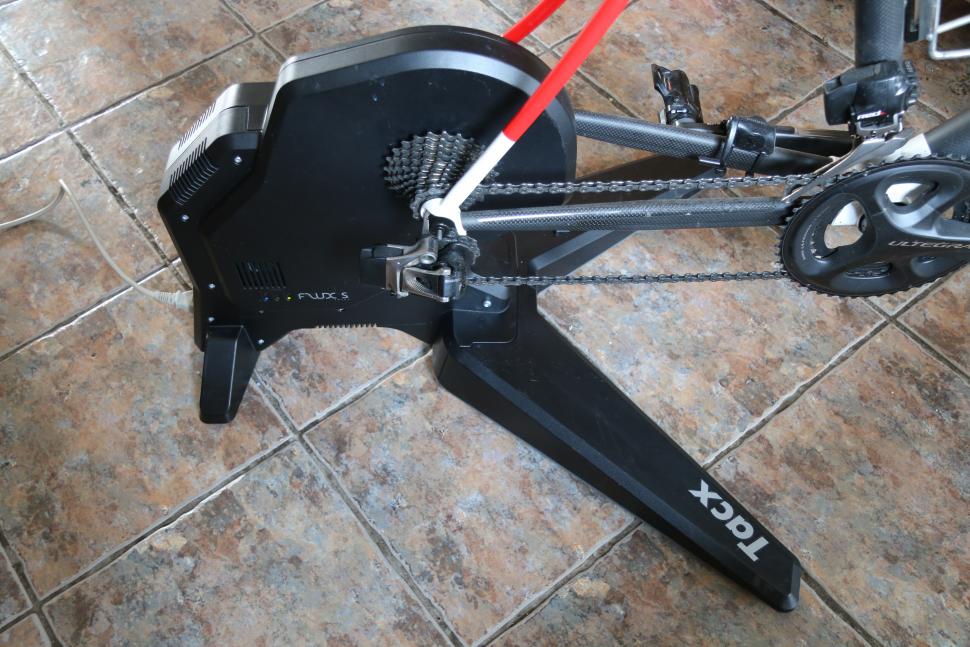
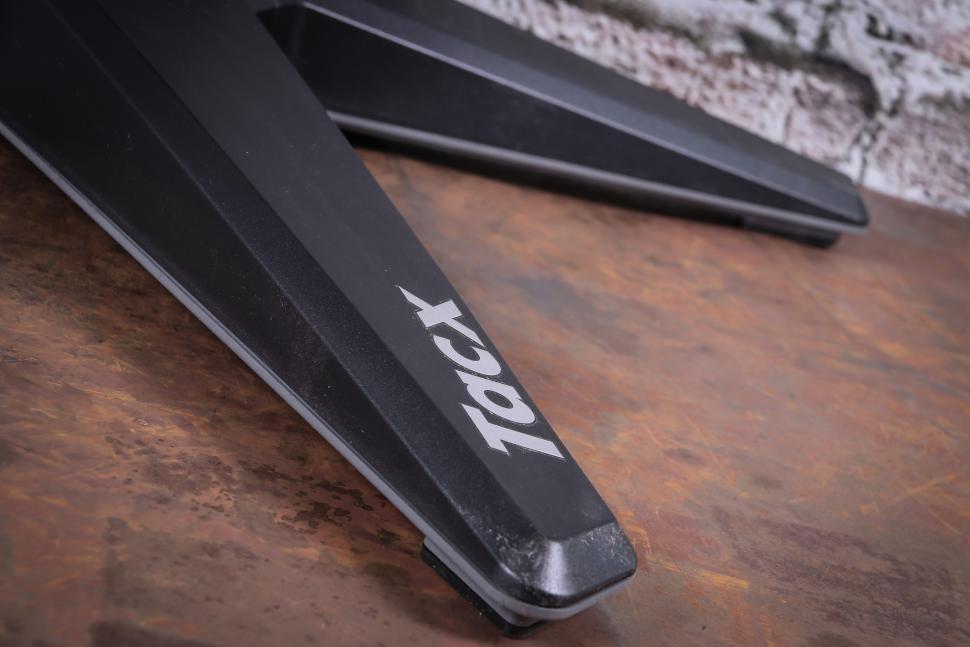

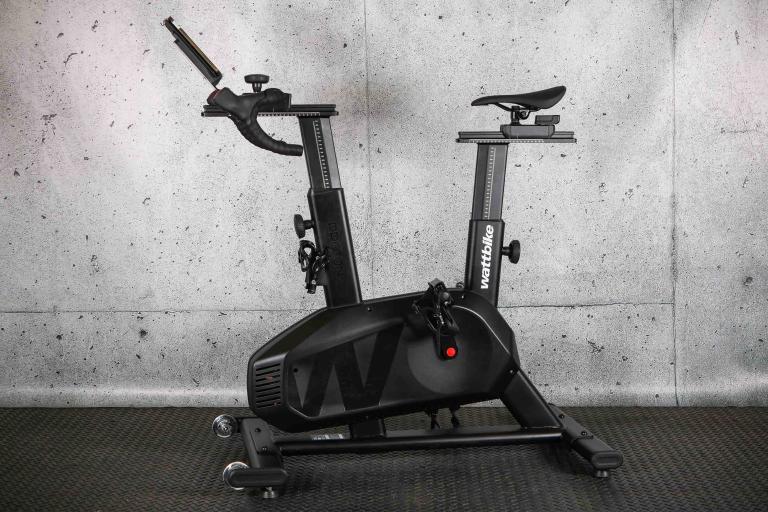
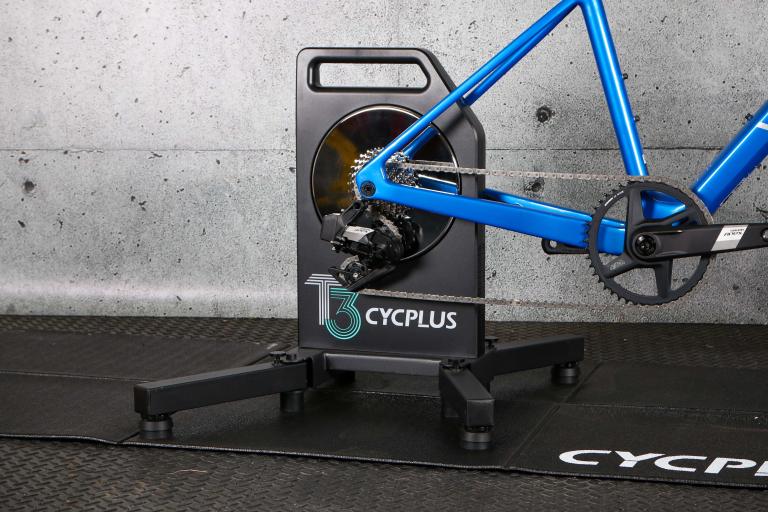
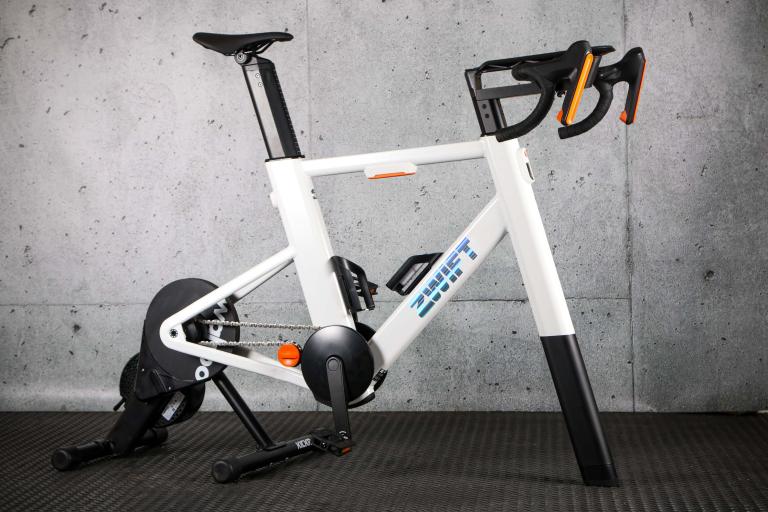

Apparently I liked that comment, but I have no memory of that....
Or this?
All of your price links appear to be pointing to the non pro version...
I would have thought having his passenger lean across him would be even more dangerous than him filming it himself...
Good try. Won't work.
More than six times over the legal limit? She's the winner here. Her punishment is insufficient.
Sram only have a foot in the market with regards to road bike abd mountain bike (and loose variations of) The rest of the bicycles sold around the...
...
so my hands are near the brake levers...
I came here on a small boat from the Road Cycling UK forum after that croaked a few yrs ago.